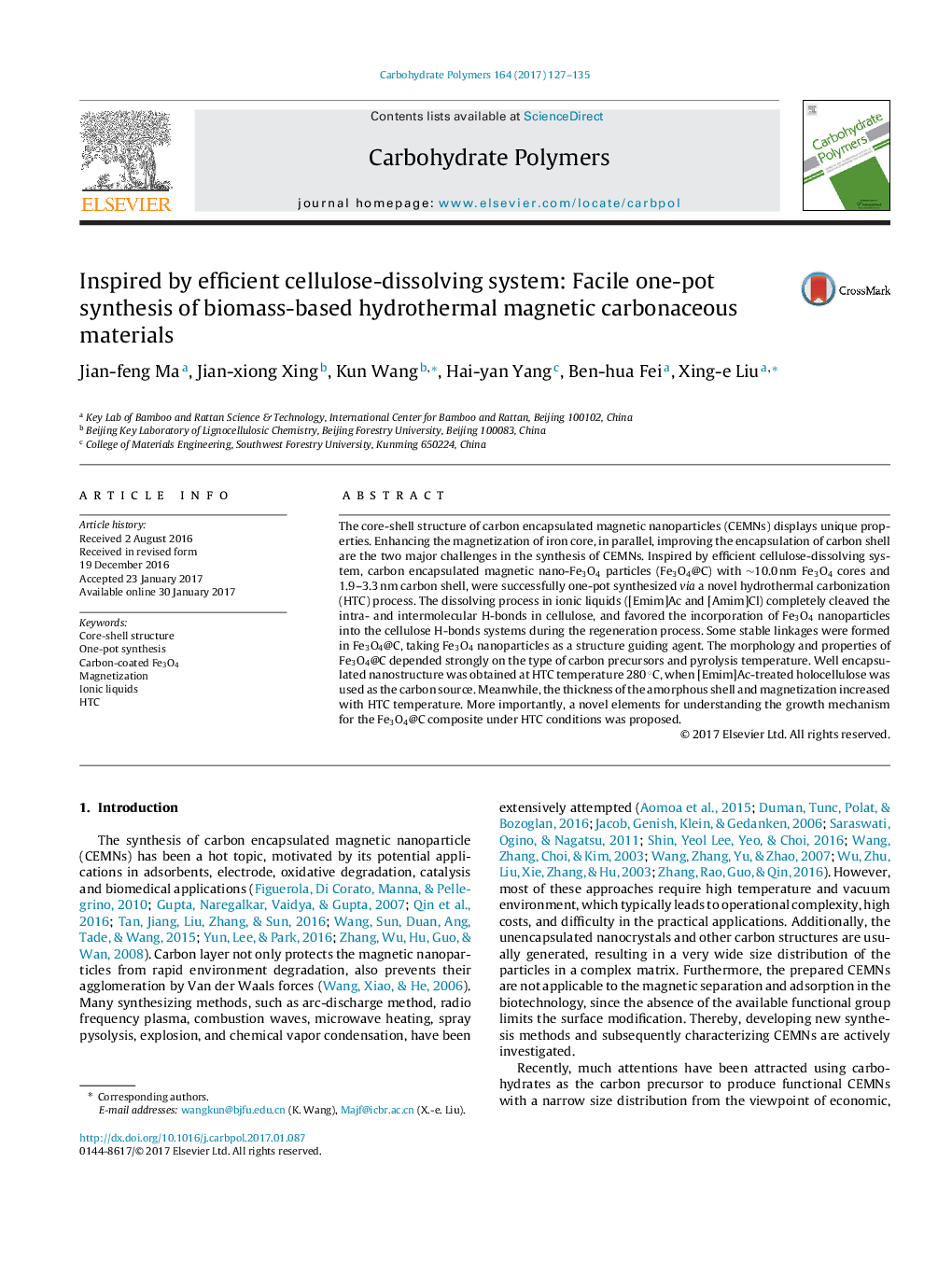| Article ID | Journal | Published Year | Pages | File Type |
|---|---|---|---|---|
| 5157533 | Carbohydrate Polymers | 2017 | 9 Pages |
Abstract
The core-shell structure of carbon encapsulated magnetic nanoparticles (CEMNs) displays unique properties. Enhancing the magnetization of iron core, in parallel, improving the encapsulation of carbon shell are the two major challenges in the synthesis of CEMNs. Inspired by efficient cellulose-dissolving system, carbon encapsulated magnetic nano-Fe3O4 particles (Fe3O4@C) with â¼10.0 nm Fe3O4 cores and 1.9-3.3 nm carbon shell, were successfully one-pot synthesized via a novel hydrothermal carbonization (HTC) process. The dissolving process in ionic liquids ([Emim]Ac and [Amim]Cl) completely cleaved the intra- and intermolecular H-bonds in cellulose, and favored the incorporation of Fe3O4 nanoparticles into the cellulose H-bonds systems during the regeneration process. Some stable linkages were formed in Fe3O4@C, taking Fe3O4 nanoparticles as a structure guiding agent. The morphology and properties of Fe3O4@C depended strongly on the type of carbon precursors and pyrolysis temperature. Well encapsulated nanostructure was obtained at HTC temperature 280 °C, when [Emim]Ac-treated holocellulose was used as the carbon source. Meanwhile, the thickness of the amorphous shell and magnetization increased with HTC temperature. More importantly, a novel elements for understanding the growth mechanism for the Fe3O4@C composite under HTC conditions was proposed.
Related Topics
Physical Sciences and Engineering
Chemistry
Organic Chemistry
Authors
Jian-feng Ma, Jian-xiong Xing, Kun Wang, Hai-yan Yang, Ben-hua Fei, Xing-e Liu,
